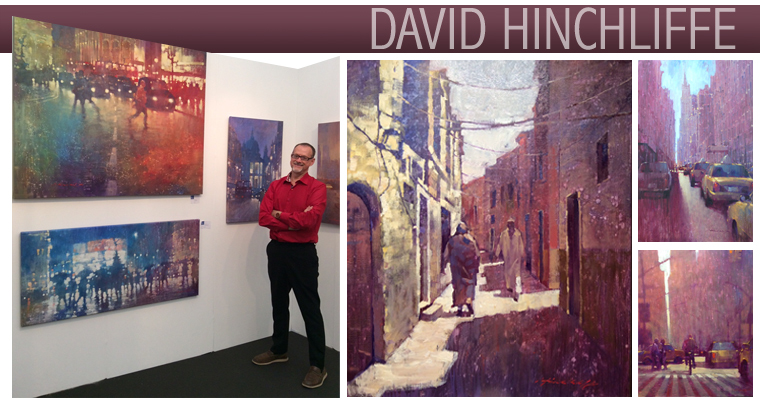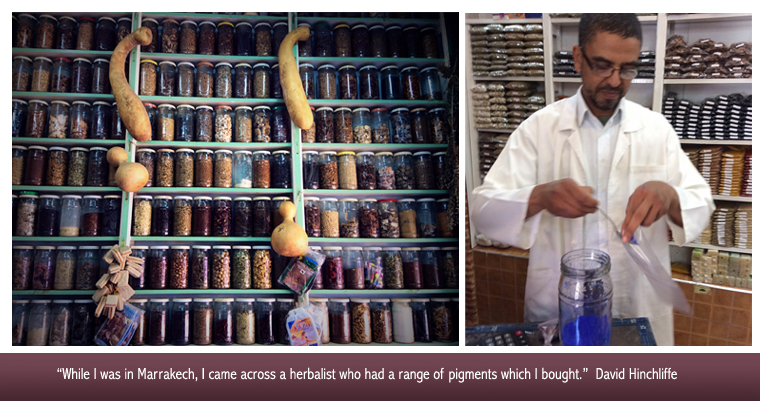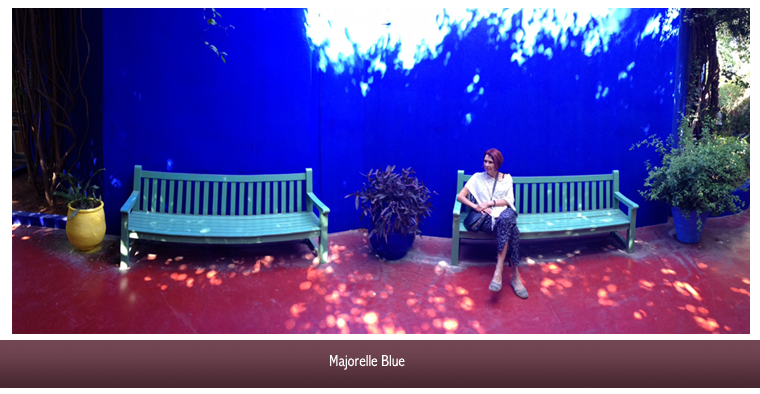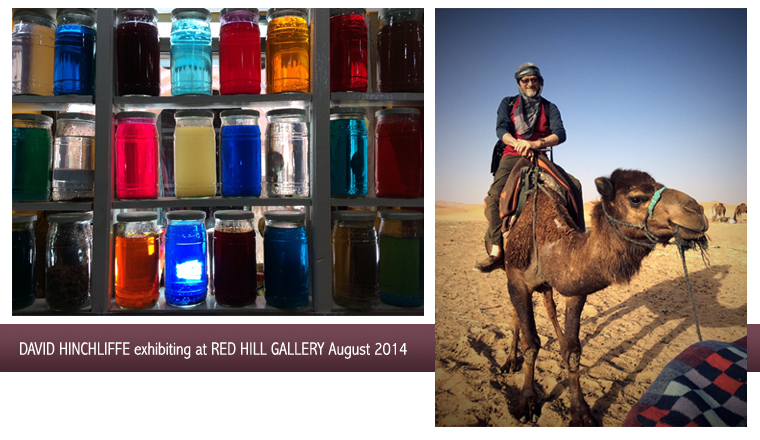
AC: Please tell us about the special pigments which you recently purchased in Marrakesh and their beautiful quality.
DH: While I was in Marrakech, I came across a herbalist who had a range of pigments which I bought. In addition to a range of magentas and sunflower yellows the most exciting of these pigments was the famous Majorelle Blue, named after the Majorelle Gardens in Marrakech which were restored by Yves St Laurent and which today are a major tourist attraction in that city. I enjoy mixing the dry pigments with refined linseed oil and using them with my regular oils.
AC: Your paintings always start with colour washes, so when you are doing these washes, do you have a particular composition in mind or do you allow the wash to determine the next step?
DH: I’m always a bit reluctant to divulge all the details of my painting preparations as they’re an essential part of the final look of the painting. It’s taken me years to develop the technique. Basically I apply thin washes of colours as an ‘imprimatura’ or underpainting.
While most artists seem to paint straight from the white canvas, there are some who use a flat mid-range imprimatura (perhaps a thin sienna wash) and then build their painting from there. However, I like to create an almost abstract organic underpainting vigorously blending several colours on the surface of the canvas or linen and then allow it to dry before beginning the final painting. I sometimes like the underpainting so much that it can be a challenge to paint over it. As to whether I have a particular composition in mind when I commence the underpainting, most of the time I do, but sometimes the result of the under painting itself changes my original conceptualisation of the painting. I’ve been known to sit and look at some of my canvas surfaces for hours after I’ve blended the colours before I see the image of the painting forming in my mind.
 AC: Do you concentrate on one theme at a time or do you vary your themes from day to day?
AC: Do you concentrate on one theme at a time or do you vary your themes from day to day?
DH: Most of my work these days is streetscapes — New York, London, Paris, Venice, Brisbane, Sydney, Havana, Marrakech — images of the places I’ve been. I have so many images in my head; I sometimes think the hardest part of my day in the studio is not the actual painting but deciding WHAT to paint. Which city will it be today?
AC: Do you always use a brush for your final highlight impasto?
DH: Yes, although sometimes I use my fingers or my thumb to blend the paint. For some effects I use a feathered brush to blur edges.
AC: What kind of art do you most identify with?
DH: That’s actually a harder question than it sounds. I’m very eclectic in my personal tastes in art. I think most people tend to identify my style of painting with the impressionists because my paintings tend to give an impression of my subjects because of the way I treat light and shade. I do think the period of the French impressionists of the late 19th century remains the single most exciting epoch in the history of art. However, I personally love the vigorous gestural style of the expressionists. AC: Who are your 3 favourite artists?
AC: Who are your 3 favourite artists?
DH: That’s another hard question. I have so many “favourites”, it’s a bit like a great box of chocolates. I’m currently fascinated by the work of Lucien Freud who died only recently. Despite the pressures of the 20th century to forge new frontiers in art, Freud unashamedly stuck to his distinctive figurative representational painting. He’s a painter’s painter. I also like Francis Bacon and David Hockney all from the UK and there’d be another 20 artists of the modern era whose names I could reel off including great Australians like William Robinson who I studied under. And of course there are old masters like Vermeer and Rembrandt and Turner whose works I always go to in the New York Met or the National Gallery in London. It’s unfair to be restricted to just three.
AC: Tell our readers something about yourself that may surprise them?
DH: The thing I most enjoy about getting back home is hopping on my scooter and driving to the studio. I find driving boring.
AC: What do you like doing when you’re not painting?
DH: THINKING about painting. I’m pretty boring like that
AC: What was your most inspiring destination during your recent travels?
DH: It would have to be Morocco. I always love painting in London, Paris and New York and I am very very lucky that my work takes me to these extraordinary cities, but this time around I was so pleased to be in places like Fez and Meknes and Marrakech that are so completely different visually from those big international cities.






